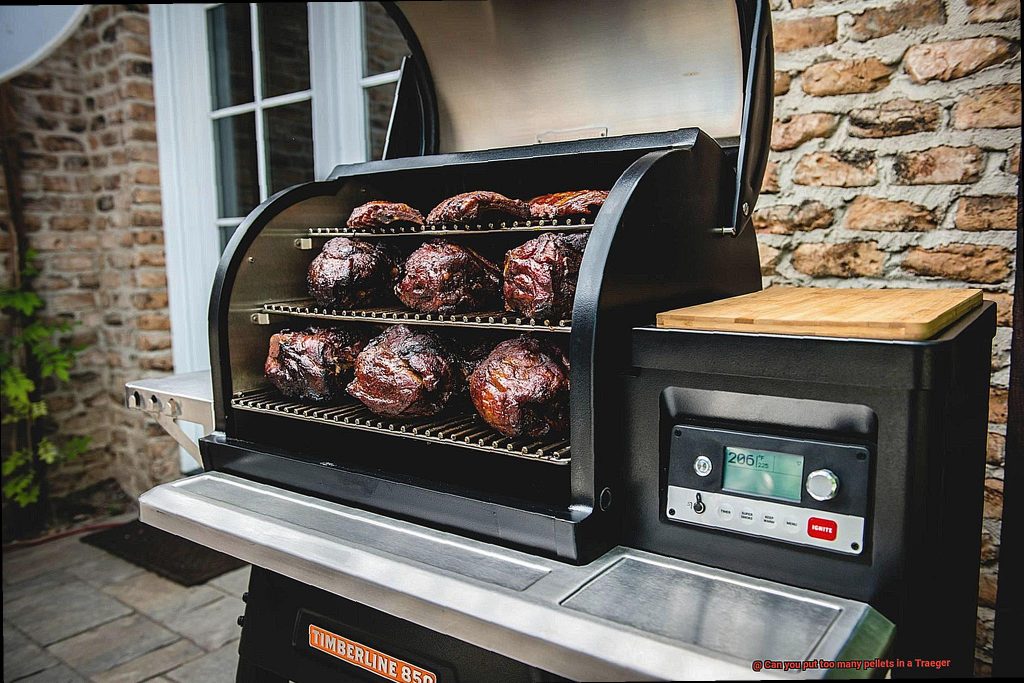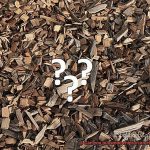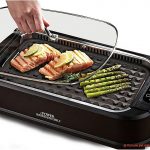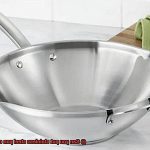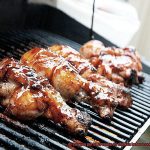Are you a grilling enthusiast who loves to experiment with unique and flavorful recipes? If so, you’re probably familiar with the Traeger grill – the ultimate tool for adding that unmatched smoky flavor to your food. However, when it comes to determining the right amount of pellets to use in a Traeger, things can get a little tricky. That’s why we’re here to answer one of the most frequently asked questions in the grilling community – can you put too many pellets in a Traeger grill?
Imagine this: you’re gearing up to start grilling your favorite recipe on your trusty Traeger grill. You open up the pellet hopper and begin loading it up with what you think is the perfect amount of wood pellets. But then, that nagging thought creeps into your mind – “Can I overfill it? Can I put too many pellets in?” Well, wonder no more because we’ve got all the answers for you.
In this post, we’ll dive deep into how the hopper functions and explore the potential consequences of overloading it with too many pellets. Whether you’re an experienced grilling pro or just starting out, our goal is to help you understand the limits of your Traeger grill and avoid any mishaps when adding pellets to your grill.
So, sit back, relax and read on as we answer this burning question once and for all – can you put too many pellets in a Traeger grill?
Contents
What is a Traeger Grill?
If you’re a fan of outdoor cooking, you’ve probably heard of the Traeger Grill. This type of pellet grill uses wood pellets as fuel to cook food and has become a popular choice among outdoor cooking enthusiasts since its founding in 1990.
What sets the Traeger Grill apart from other grills is its precise temperature control. You can easily adjust the temperature using a digital controller, making it simple to maintain a consistent temperature throughout the cooking process. This means you can cook your food to perfection without worrying about undercooking or overcooking.
Another benefit of using a Traeger Grill is the smoky flavor imparted by the wood pellets. This adds a delicious depth of flavor to your food that many people find irresistible.
Traeger Grills come in a wide range of sizes and styles to suit different needs and preferences. Whether you’re cooking for a small family or hosting a large gathering, there’s a Traeger Grill that will work for you. And if you like to take your cooking on-the-go, there are even portable models that can be easily transported.
However, it’s important to follow the manufacturer’s guidelines for pellet usage. Overfilling the hopper with pellets can lead to complications and hinder your grilling experience. The Traeger Grill is designed to operate with a specific amount of pellets in the hopper to avoid clogging the auger or causing uneven cooking and temperature fluctuations.
What is the Hopper and its Purpose?
It’s crucial to understand the hopper and its purpose. This small yet critical component is located at the back of the grill and is made of either metal or heavy-duty plastic.
The hopper’s primary purpose is to hold and dispense wood pellets into the firebox. It achieves this through an auger that feeds the pellets into the firebox and a motor that powers the auger. As soon as you turn on your Traeger grill, the motor in the hopper starts running, and the auger begins to feed pellets into the firebox.
It’s essential to know that each Traeger grill has a specific hopper size designed to hold a particular amount of pellets. The larger your grill, the more pellets it can hold. However, adding too many pellets to your hopper could lead to several issues such as clogging, poor airflow, and even flames shooting out of your grill.
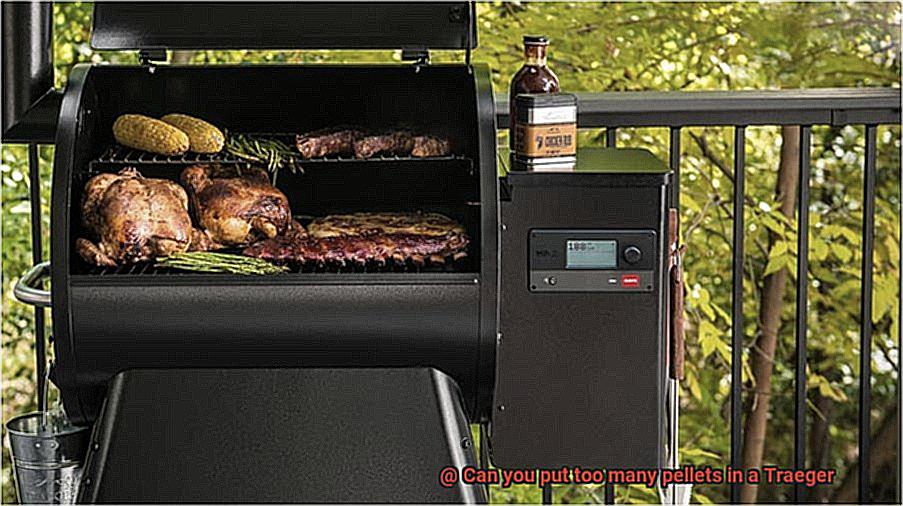
To ensure an enjoyable and hassle-free grilling experience, here are some subtopics to keep in mind:
- Hopper capacity: Before cooking, check your Traeger grill’s manual for the recommended pellet capacity of your hopper. Overfilling your hopper can cause issues such as clogs and poor airflow.
- Pellet storage: Store your wood pellets in a cool, dry place, away from moisture and humidity. Wet or damp pellets can cause issues in your hopper and affect the quality of your food.
- Pellet type: Always use high-quality wood pellets that are designed for use in Traeger grills. Using low-quality or unapproved pellets can lead to poor performance and damage to your grill.
Is it Beneficial to Put More Pellets in the Hopper?
First and foremost, Traeger grills are specifically designed to work with a certain amount of pellets. Overfilling the hopper can cause problematic issues such as jamming or burn back, which can be detrimental to the grill’s performance and ruin your cookout plans.
Though some may think that adding more pellets will result in longer cooking times and a more intense smoke flavor, it may not necessarily be true. In fact, overloading the hopper can cause the pellets to burn too quickly, resulting in an unpleasant, bitter taste. While it’s true that extending the cooking time is possible with more pellets, it may not always result in better flavor.
On the other hand, under-filling the hopper can also lead to problems. If there aren’t enough pellets in the hopper, it can cause an unevenly cooked meal due to an inability to sustain the fire for the desired cooking time.
To ensure high-quality and delicious meals every time, it’s best to follow the manufacturer’s recommendations for pellet usage and avoid overloading the hopper. This way, your Traeger grill will function properly without any issues.
In summary, here are some key takeaways:
- Traeger grills are designed to work with a specific amount of pellets.
- Overloading the hopper can cause jamming or burn back and lead to a bitter taste.
- Under-filling the hopper can cause an unevenly cooked meal.
- Following the manufacturer’s recommendations for pellet usage is crucial for optimal performance and delicious meals every time.
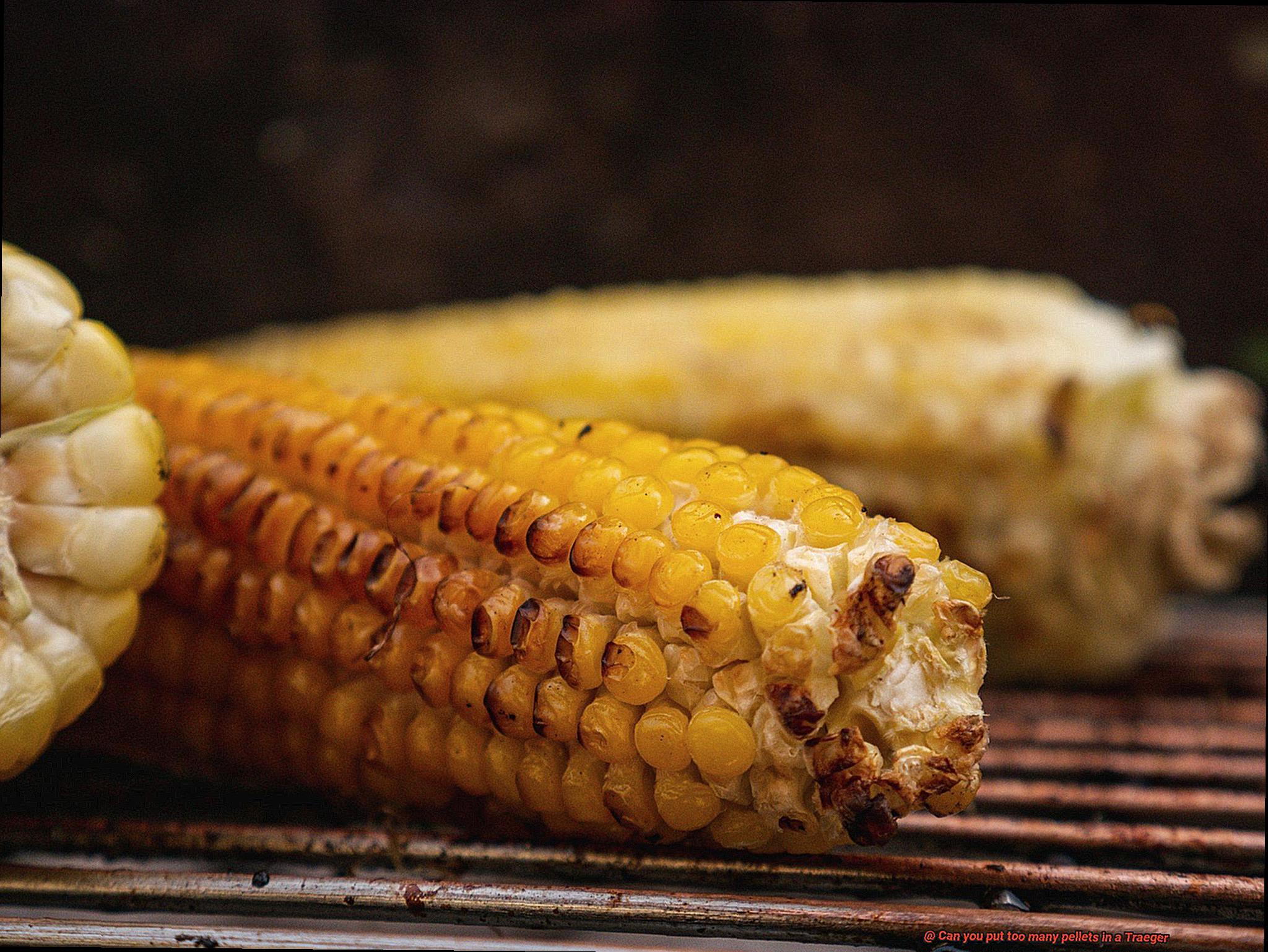
Potential Risks of Overfilling the Hopper
Nothing beats the taste of a juicy, perfectly grilled meal on a Traeger. But before you start cooking up a storm, it’s important to understand the potential risks of overfilling the hopper on your Traeger grill.
Firstly, overloading the hopper can be a recipe for disaster. Compacted pellets in the hopper can ignite and cause a fire that can quickly get out of control. This not only poses a significant danger to you and your property but can also result in costly damages or even total loss of your grill.
In addition to the risk of fire, overfilling the hopper can put unnecessary strain on your Traeger’s motor and auger. These components are responsible for feeding pellets into the firepot, and if they wear out too quickly due to excessive pellet usage, you may need to shell out money for repairs or a new grill.
But that’s not all. Overfilling the hopper can also affect the quality of your food. Uneven burning and temperature fluctuations can result in poorly cooked meats and less-than-ideal smoke output, ultimately impacting the flavor and texture of your meal.
To avoid potential risks, it’s crucial to follow the manufacturer’s recommendations for pellet usage and exercise caution when filling the hopper. Don’t be tempted to stuff as many pellets as possible into your grill – it’s simply not worth the risk. Here are some ways overfilling the hopper can impact your grilling experience:
- Fire hazard
- Damage to your grill
- Poor quality food
How Can Overfilling Affect Cooking Results?
Well, you might want to pay attention to this – overfilling your grill can turn your cooking paradise into a nightmare. But how exactly does overfilling affect the cooking results? Let me enlighten you with some fascinating research-backed information.
Firstly, overfilling the hopper with pellets can cause uneven cooking. You don’t want hot spots in your grill that will burn one side of your meat and leave the other side raw. When too many pellets are added, they tend to burn too quickly, causing the temperature to rise abruptly, which results in hot spots. This can affect the quality of your food and leave you with unsatisfactory results.
Secondly, overfilling can also reduce airflow in the grill. When there are too many pellets, there’s less room for air to circulate, and this can lead to smoldering. The fire will create a lot of smoke, which can cause bitterness in the food and leave it undercooked. Nobody wants that.
But wait, there’s more. Overfilling the hopper puts unnecessary strain on your Traeger grill’s motor and auger. The excessive load can cause the motor to work harder than necessary, leading to premature wear and tear on the grill’s parts and ultimately shortening its lifespan. Nobody wants a grill that dies on them before its time.
What Does Traeger Recommend for Pellet Usage?
If you’re an avid Traeger grill user, then you already know that the brand has specific recommendations for pellet usage. Traeger is the leading brand in pellet grills, and they understand the importance of using the right kind of pellets to ensure optimal performance and longevity of their grills. Here’s what Traeger recommends for pellet usage:
First things first, Traeger suggests using only their own brand of hardwood pellets. These pellets are made from 100% pure hardwood and are free from fillers or additives. By using Traeger pellets, you’ll get a consistent flavor every time you cook on your Traeger grill, and you won’t have to worry about damaging the grill’s components with other types of pellets.
In addition to using Traeger pellets, it’s essential not to overfill the pellet hopper. Overfilling can cause all sorts of problems, such as jamming, auger motor burnout, and even fire hazards. To avoid these issues, fill the hopper with only enough pellets for the cooking session and never leave any leftover pellets in the hopper after cooking.
Traeger also advises against mixing different pellet flavors or types in the hopper. Mixing pellets can affect the flavor profile and cause uneven burning. Stick with one type and flavor of pellet at a time to ensure that your food tastes delicious every time.
Lastly, it’s crucial to note that Traeger grills have a digital controller that regulates the pellet feed rate and maintains a consistent temperature throughout the cooking process. Overloading with pellets can cause an excessive amount of smoke, which could result in a bitter taste on your food. Following Traeger’s guidelines for pellet usage will not only ensure your safety but also provide you with delicious and consistent results every time you cook on your grill.
pG_hOV-ilco” >
Conclusion
In conclusion, owning a Traeger grill is a game-changer for outdoor cooking aficionados seeking that unbeatable smoky flavor. However, it’s crucial to take caution when determining the correct amount of pellets to use in your Traeger. Overloading the hopper with too many pellets can result in clogging, poor airflow, and even flames shooting out of your grill. To avoid turning your cooking paradise into a nightmare, follow the manufacturer’s guidelines for pellet usage and exercise caution when filling the hopper.
Overfilling your grill can cause uneven burning and temperature fluctuations leading to poorly cooked meats and less-than-ideal smoke output. Ultimately, this can impact the flavor and texture of your meal. Additionally, overfilling reduces airflow in the grill leading to smoldering which causes bitterness in food and leaves it undercooked.
Traeger recommends using their own brand of hardwood pellets exclusively, avoiding mixing different pellet flavors or types in the hopper. They also advise against overfilling the pellet hopper as it can cause all sorts of problems such as jamming, auger motor burnout, and fire hazards.
By adhering to these guidelines, you not only ensure your safety but also guarantee delicious and consistent results every time you cook on your grill. So next time you’re gearing up to start grilling on your trusty Traeger grill, keep these tips in mind to avoid any mishaps when adding pellets to your grill.

